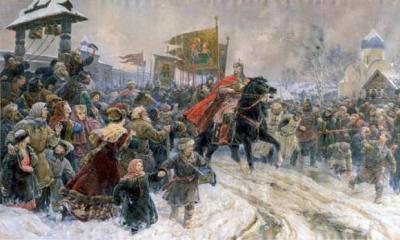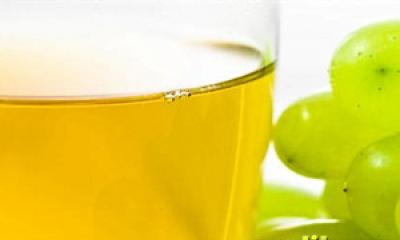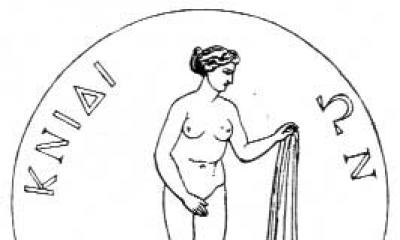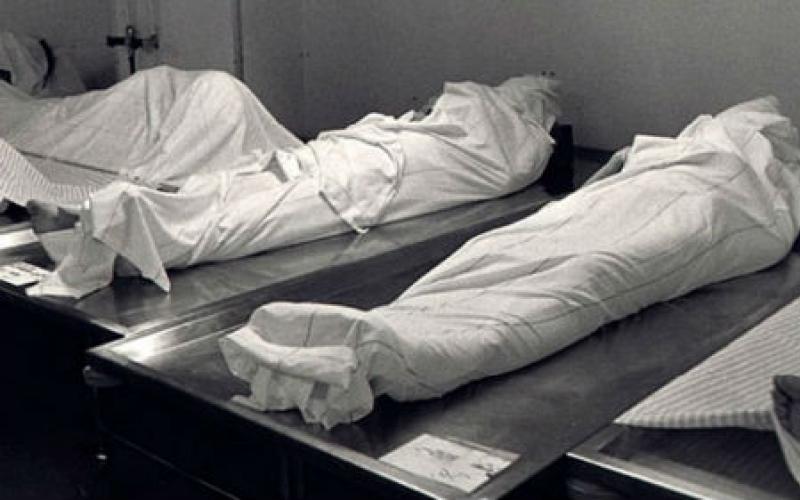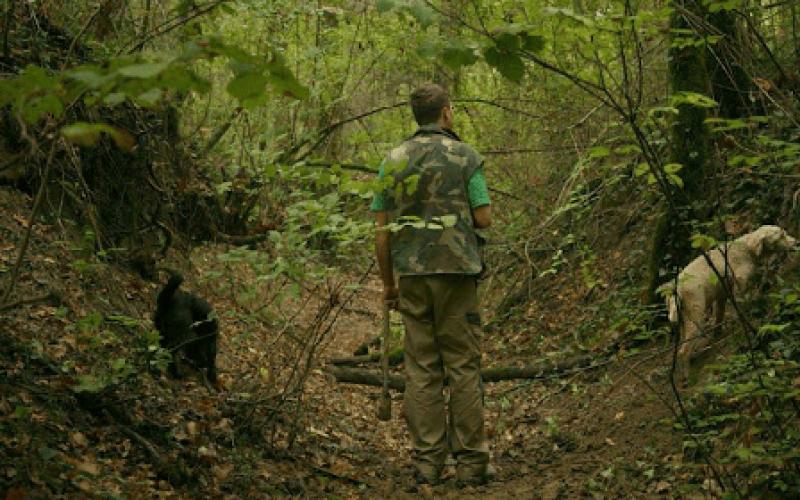Freemasons claim that their only goal is to make people better, and his ideals of friendship, mercy and brotherly love have survived through the centuries even in the most powerful political, military and religious conflicts. Freemasonry is not an assembly or a place of worship. This is not a religion as many think, it does not teach religious philosophy. But there are still many questions about this brotherhood.
Faktrum gives answers to many of them. So who are the Freemasons?
1. The number of Freemasons worldwide is approximately equal to 5 million (of which about 480 thousand in the UK and 2 million in the USA).
Photo source: Mixstuff.ru
2. Many people think that Freemasonry is a secret society, but it is not. Freemasons are free to declare their affiliation, although they cannot reveal the secrets of the order.

3. The generally accepted date for the appearance of Freemasonry is June 24, 1717, when the Grand Lodge of London was created. After this date, the Grand Lodges began to govern other lodges.

4. The Masonic Society uses the methods and tools of Masons to educate its members in the principles of morality, friendship, and brotherly love. Therefore, the compass and the square became the main emblem of the society.

5. It is generally believed that Freemasons use symbols to keep their activities secret. However, the symbols appeared at the earliest stages of the formation of the brotherhood, when many of its members could not read. Abundant symbolism served as a reminder of the lessons of brotherhood.

6. The oldest Masonic symbol can be called a compass and a square. It is also the most universally recognizable sign, although its precise meaning varies with different countries

7. A Masonic "lodge" is not just the name of a building, but a group of people who hold meetings in that building. Each lodge receives letters from the "Grand Lodge", but basically the principle of self-government is in effect. There is no single ceremony for conducting meetings, the rituals vary from group to group.

8. It is impossible to become a Freemason by being an atheist. The primary requirement for potential members is belief in some higher power.

9. There are two well-known branches of Freemasonry. Regular, administered by the United Grand Lodge of England and Liberal, represented by the Grand Orient of France.

10. Freemasons usually recognize each other by various "secret" signs, such as rings with the Masonic emblem, patches on clothes, and sometimes the famous Masonic handshake (during shaking thumb touches another person's hand in a special way), although the latter mostly refers to Freemasons from San Francisco and Washington.

11. Anders Breivik, who committed the mass murder in Norway in 2011, was a practicing Freemason.

12. Freemasons have a rule - not to testify against other Freemasons. They admit that this can lead to perjury, but for them not to protect their own is a much greater sin.

13. There is no one person who expresses the opinion of all Masons. The Brotherhood is made up of a large number of people in many organizations under their territorial Grand Lodge. No member may speak on behalf of the entire Freemasonry. This is the duty of the Grand Lodge that unites the territory.

14. There is a connection between Freemasons and the Statue of Liberty. The author of the statue, Frederic Bartholdi, was a Freemason

15. The masons used secret handshakes and passwords to distinguish between insiders and keep the secrets of the guild. Now these rituals are associated with Freemasonry.

16. Astronaut Buzz Aldrin was a member of Clear Lake Lodge No. 1417 in Texas. He piloted the lunar module on Apollo 11 on the first manned lunar landing in history. When he set foot on the Moon, he had a special commission from his Grand Master to declare the Moon to be the territorial jurisdiction of the Grand Lodge of Texas. John Glenn was also a Freemason.

17. Katherine Babington was so eager to find out what kind of Freemasonry was that for more than a year during the meetings she hid inside the pulpit for speaking. When she was discovered, she was held captive for almost a month.

18. The most famous Freemasons include Charles Darwin, Mark Twain, Winston Churchill, John Edgar Hoover, Benjamin Franklin, and the first President and Founding Father of the United States, George Washington.

19. Conspiracy theorists link Freemasons to the Illuminati. But this is not too close to the truth, since the Illuminati society is so secret that some still do not believe in its existence, while Freemasons are free to declare their affiliation.
There are more than a dozen secret organizations in the world that trace their history back to the Middle Ages. They have a lot of rituals hidden from the eyes of outsiders, and not even all the dedicated members of the community know about all the goals of the organization. The most closed and mysterious organization is the Masonic Lodge. This society has been of great interest to adventurers and those who dream of knowing the true meaning of their existence for several centuries. However, no one has yet managed to get to the Masons just like that, because the secret organization is very careful in choosing its new brothers. Few people know that Masonic lodges also exist in Russia. They do not advertise their activities too much and deliberately defiantly avoid sensitive political issues, but modern society is increasingly interested in their activities. Therefore, we decided to devote our article to the consecration of the topic of Freemasonry in Russia and the history of the formation of this secret community.
A few words about Masons
It is difficult to find a country in which at least one Masonic lodge would not operate now. This secret society has managed to stretch its threads to almost every state, and it is almost impossible to find out whether this or that politician is in the Masonic society, unless he himself wants to reveal this fact. None of the members of the organization will ever announce the names of their brothers, this is one of the most important laws for all who have joined the Freemasons.
Freemasons are often accused of controlling the main world leaders in their own interests and a lot of terrible things, which, however, no one can confirm. They themselves claim that they are far from the political arena and are determined only to act for the good of their country. However, many journalists spend their energy trying to uncover the secret motives of the Freemasons and reveal them to the world community.
Where did such suspicions come from? And what exactly is a Masonic lodge? This is quite difficult to explain, even after studying all the available information about this society. After all, more than ninety percent of the rituals and rules of this brotherhood remain outside the prying eyes of the uninitiated. Therefore, we have a very rough idea of the activities and main goals of the Masons.
If we make a literal translation from in English, then the Masonic lodge is a workshop or shelter where members of society gather to conduct their rituals and work. The brothers meet regularly and by a general majority decide all issues important to the lodge.

History of Freemasonry
A secret organization has existed in the world for more than three hundred years. The official date of its foundation is the twenty-fourth of June 1717. It was then in London that ordinary artisans involved in the construction of temples united into a single Grand Masonic Lodge. It is worth noting that it consisted of four different lodges, which previously gathered in various taverns, and it was from that time that the procession of the secret brotherhood around the world began, affecting almost every major state on the planet.
Initially, Freemasons, who, as artisans, spent many years building cathedrals, learned to subordinate themselves to common goals and ideals. They elevated mutual aid to the rank of piety, and even acquired their own philosophy. Therefore, when the need for craft associations disappeared, Masons arose who dreamed of building a free, humane and just society. No wonder they have been called "freemasons" since ancient times.
Gradually, representatives of the intelligentsia, aristocrats, merchants and financiers began to join the secret organization. All of them dreamed of finding here answers to their questions about the meaning of being and self-realization. Over time, society has grown to an incredible size. For example, today in the United States there are about two million Masons, and in Great Britain - three hundred thousand members of a secret society. Russia, of course, cannot be compared with European countries by the number of Freemasons, but now we have more than one thousand of them. Masonic lodges in Russia are actively developing and increasing the number of their members. However, skeptics argue that in reality there are much more Freemasons in our country than official statistics say. It's just that many prominent politicians and oligarchs carefully hide their belonging to a secret society. Whether this is true, no one knows.
Lodge classification
It is interesting that among the Masons there is a certain classification of lodges, which is not officially fixed. However, it is she who affects all members of the brotherhood. For example, there are closed lodges focused on scientific research. They do important work and never accept new members into their fraternity. Such an event may be a very rare exception to the rule. Some lodges are made up of brothers who live and work in the same locality. And others may be united by common interests or one profession.
Also, all lodges are divided into three categories:
- Ioannovsky.
- Andreevsky.
- Red.
These associations represent the Masonic hierarchy, but all members of the secret society are considered equal and free.

In the entire history of its existence, not a single woman has been accepted into the Masonic lodge. The charter of the society does not contain any information about the ban on the admission of women to the fraternity, but this unspoken rule has been observed for almost three hundred years.
Each lodge meeting ends with a dinner, during which the first toast is made to one's country, the second to the head of state, and the third to the chairman of the lodge and all its members.
Freemasons have many secret signs that initiates exchange with each other. Thanks to them, members of the brotherhood will not go unnoticed in a foreign country. There is also a special phrase that notifies that there is a stranger among the members of the lodge.
Lodge initiation
You can't just get into the Freemasons. A person from outside has absolutely no chance to touch the ancient secret society. After all, at least two members of the brotherhood must vouch for him.
If you have such guarantors, then there is also a chance to become an equal member of the Masonic Lodge. The brothers get together once a month, it is at this time that the initiation procedure for newcomers takes place.
She looks very unusual and mysterious. The applicant is blindfolded and taken to a secret place where many questions are asked. The membership of the Masons will depend on the answers to them. Usually the questions concern the purpose of joining the lodge and the benefit that the newcomer can bring to his country and brethren.
Each member of the brotherhood votes "for" or "against" the admission of the applicant to the secret society. Voting takes place by means of balls of black and white color. Interestingly, if a person scores three black balls, then he loses all chances of ever being accepted into the Masons. And this applies not only to the lodge where the voting took place, but also to all associations on the planet.
If the candidacy is approved by the brothers, then the initiation ritual follows directly. Its details are still a secret.

Freemasons in Russia: historical facts
Masonic lodges in Russia were very common. Many aristocrats were their members, which gave rise to a large number of rumors and gossip about conspiracies of a secret society against the current government. In fact, these conversations had some basis, it was given by the very manner of the monarchs Russian politics, resolving all issues behind the scenes. A similar habit was formed back in the days of the Byzantine Empire and smoothly passed into the palaces of Russian monarchs. It was on this fertile ground that rumors arose that the Masonic lodges of Russia are practically the creators and ideological inspirers of the country's domestic and foreign policy.
Masonic lodges in Moscow and other cities flourished in the first half of the nineteenth century with the blessing of Alexander I. The emperor himself was also a member of the brotherhood, besides him, Peter I, Paul I, and even the great poet Alexander Pushkin were initiated. Members actively interfere in the politics of the country, and in 1822 Alexander I issued a decree banning the activities of the secret society on Russian territory.
During this period, many Freemasons left the country and continued their activities outside of it. Especially often the meetings were held in France, where all the active members of the society came.

The revival of Freemasonry in Russia
The Grand Masonic Lodge of Russia was created in the ninety-fifth year of the last century. She has connections with more than a hundred other lodges in the world, including the English one. Without this, the lodge does not have the right to conduct its work, because recognition is a kind of patent that makes it possible to touch the ancient secrets of society and be its full members.
Initially, four Masonic lodges were created in our country: two in Moscow and one each in St. Petersburg and Voronezh. However, their number increased rapidly - a year after the founding of the Grand Masonic Lodge of Russia, there were already two shelters for freemasons in the northern capital, and three in Moscow.
Georgy Dergachev was elected chairman of the Masonic Lodge of Russia, who remained in this rank until 2007.

Masonic lodges today
According to the latest data, there are already more than sixteen Masonic lodges in Moscow, in addition, they exist in more than thirteen cities of Russia. These include St. Petersburg, Voronezh, Kazan and Krasnodar. All members of the fraternity report to the chief master and pay dues annually.
Interestingly, being a Freemason is far from a cheap pleasure. After all, monthly contributions, for example, in Russia amount to about three hundred dollars. Voluntary donations must be added to this figure, and you get a fairly round sum, which is available only to very wealthy people. In each country of the world, the amount of contributions may be different, this is determined by the internal charter of the brotherhood. For example, in the USA Masons pay no more than one hundred dollars a month.
Chairman of the Masonic Lodge of Russia
Since 2007, the same person has been elected master of Russian masons - Andrey Bogdanov. According to the regulations, the chairman is elected for a period of five years, after which he has the right to re-election. The next elections will take place in the Masonic Lodge in 2020.

Conclusion
Many journalists like to write articles that, thanks to the conspiracy of the Freemasons, the world will soon plunge into chaos, and only the chosen ones who are members of the brotherhood will survive in it. Interestingly, no evidence or refutation of this theory has yet been found. We can only wait for the Masons to show the world their very main secret- the purpose of their three hundred years of existence.
Many legends have developed around the Masons - from the theory of the "world Jewish Masonic conspiracy" to blood-chilling stories about ritual murders. The Freemasons themselves call themselves not a secret society, but a society with secrets. In our review, a selection of facts about this private men's club of rich intellectuals.
1. About five million Freemasons

Freemasonry exists in various forms throughout the world. It is believed that there are about five million Freemasons in the world (including about 480 thousand in Great Britain and more than two million in the United States).
2. Masons - secret or not secret?

Contrary to popular belief, Freemasons are not a secret society. A Mason is free to tell people that he is a Mason. But they cannot divulge the secrets of their order.
3. June 24, 1717

4. Morality, friendship, brotherly love

Images of working tools in the symbolism of Masons are an illustration of morality, friendship and brotherly love of the members of the order.
5. Origin of symbolism

It is believed that Masons use the symbols because of the secrecy of the brotherhood. However, in fact, Freemasonry began to use symbols, since at the time of the foundation of the society, most of its members could not read.
6. Square and compass

The oldest Masonic symbol is the square and the compass. It is also the most common symbol of Freemasonry, although its exact meaning varies from country to country.
7. Masonic lodge - a community of people

The Masonic lodge is a community of people, and not just the name of a building. Each lodge must receive a charter from the "Grand Lodge", but after that they are mostly self-governing. Also, there are no generally accepted rituals for conducting meetings, they are different in each lodge.
8. Atheist? So not a mason

An atheist cannot become a Freemason. The first requirement is that prospective members must believe in some sort of higher power.
9. Two branches of Freemasonry

There are two branches of Freemasonry: regular, which is subordinate to the "United Grand Lodge of England", and liberal, which is subordinate to the "Grand Orient de France".
10. Secret signs

Freemasons traditionally greet each other with various "secret" signs, including wearing a ring with the Masonic emblem, various badges, and sometimes exchanging the so-called "Masonic handshake".
11. Anders Breivik

Anders Breivik, known for the 2011 Norwegian serial murders, was also a Freemason.
12. Ordered to bear false witness

Freemasons cannot give truthful evidence in court if the defendant is their brother in the order, and he is guilty. They admit that this may be perjury, but in the brotherhood it is considered a much greater sin not to protect "one's own."
13. Freemasonry has no single leader

Freemasons are a multitude of people in numerous organizations that are subordinate to the local Grand Lodge. None of these members of the fraternity and not one organization can speak on behalf of the entire Freemasonry - this is allowed only by the Grand Lodge.
14. Statue of Liberty

Frederic Bartholdi, the man who created the famous Statue of Liberty, was a Freemason.
15. Handshakes and passwords

The secret handshakes and passwords currently associated with Freemasonry were previously used by Freemasons to get to know each other. This was essential to keeping the secret of the brotherhood.
16 Lunar Module Pilot

Astronaut Buzz Aldrin was a member of Clear Lake Loggia #1417 in Texas. He was also the lunar module pilot on the Apollo 11 mission.
17. Catherine Babington

Catherine Babington was so eager to learn the secrets of Freemasonry that she hid inside the pulpit during lodge meetings in Kentucky for a year. When she was discovered, she was held captive for a month.
18. The most famous Freemasons

Charles Darwin, Mark Twain, Winston Churchill, J. Edgar Hoover, Benjamin Franklin, and the first President and Founding Father of the United States, George Washington, were all Freemasons.
19. Illuminati and Freemasons

Conspiracy theorists link Freemasons to the Illuminati. However, this seems unlikely because the Illuminati is a completely secret society (to the extent that most people believe that this society does not exist today), while Freemasons may divulge that they are members of the Masonic lodge.
20. The Nazis destroyed the Freemasons
23. Chicago Masonic Temple

The Masonic Temple in Chicago, Illinois, completed in 1892, was at the time the tallest building in the world. It had 22 floors.
24. Freemasons at War

During the American civil war soldiers of enemy armies, who recognized each other as Freemasons, helped and saved each other's lives. Even during the war, the loyalty of the Freemasons to the brotherhood did not disappear anywhere.
In 2007, the most mysterious organization in the world reopened its lodge in Russia. Today it already includes about 400 people. can be found in one of our reviews.
Already in modern times, Masons created texts where they proved ancient origin of his order. If you ask who the Freemasons are and what they do, you will notice that they are seriously different from their predecessors. The first texts, written in England in the late Middle Ages, told of the ancient craft of masonry and the discovery of its secret. English masters. After the formation of the London lodge, the history of the order was counted from biblical times. The appearance of Freemasons (experts in the secret of masonry) in England was attributed to the era of King Athelstan (X century).
In England in the XIII - XIV centuries, the appearance of the name "Masons" as a designation of masons is recorded in documents. The documents also refer to them as "Freemasons", which may mean that the masons were not bonded or serfs.
A master mason had to get a good education in his teens: learn Latin, serve as a page to a knight in order to learn manners. After he studied the profession of a bricklayer and geometry. As a young man, a Freemason received the status of apprentice and had to present a "masterpiece" (do a building or design job) in order to receive the status of a skilled worker.
To become a master, a bricklayer had to complete some large and meaningful project. Master Masons are mentioned in documents as leaders of works with a high social status. The recipient of this status went through an initiation rite, the details of which were kept secret.
Already in the Middle Ages, Masonic lodges are mentioned as organizations of masons. In the XVI - XVII centuries their members were people who had nothing to do with the craft of masons. Among them were philosophers, alchemists, and also the nobility (“noble disciples”).

Gradually, those admitted to the fraternities became the keepers of the traditions of the lodges of freemasons. Practicing masons, on the contrary, forgot them, concentrating on their direct activities. The traditions and teachings of medieval masons began to be interpreted in a new way and laid the foundations of the esoteric society of Freemasons.
The Beginning of Speculative Freemasonry
In 1717, four London lodges, whose names were derived from the taverns where their members met, united to form the Grand Lodge of London. Its members began to collect materials on the history of Freemasonry. In 1723, the "Book of Statutes" was published, which included a list of the duties of Masons and information on the history of the brotherhood.
Most of the English lodges continued to be independent of the London lodge and even criticized it. In 1753, the opposition created their own "Grand Lodge". They showed respect for the old rules, and their charter was a pamphlet against the "Book of Rites" of the Londoners. In 1813, both organizations created the United Grand Lodge and two years later - a new charter.
Under the influence of the British, Masonic lodges appeared in Ireland and Scotland. After 1649 Freemasonry entered France with English emigrants.

In the XVIII century in France there were lodges of the "Scottish" type and new ones, subordinate to the Great London. The number of Masonic societies in the kingdom grew throughout the 18th century - by 1771 their number exceeded 300. Only a few of them were recognized by the Grand Lodge of London. In 1738, the French aristocrat Ludovic de Pardalyan was elected Grand Master of the French Kingdom. In 1773 French Freemasons founded a national lodge, the Grand Orient de France.
Freemasons were not persecuted and enjoyed the interest of society. The members of the lodges were representatives of the most noble families, including the counts of Provence and Artois, who would later become kings Louis XVIII and Charles X. It was said that King Louis XV himself was a member of the lodge.
In the 1720s, Masonic lodges appeared in Spain, in the 1730s in Italy, Scandinavia, the Netherlands, Portugal and India. In 1733, the Great American Provincial Lodge began operating in Boston. In the Netherlands, their activities were soon banned.
In 1756 mainland Freemasonry was organized into what is known as the orthodox system. The territory of the order was divided into nine provinces and covered the whole of Europe. Members of the order were divided into six degrees. In addition to them, in the 1760s and 1770s, there were the highest degrees of initiated Masons and great ones who made a vow. They managed the affairs of the order, remaining unknown to ordinary members.

Lodges appeared in Russia after the era of Peter I. In 1731, the first great master was appointed in the country. In 1792 and 1822, the activities of Freemasons in Russia were banned by imperial decrees. The revival of Freemasonry in the country began at the beginning of the 20th century.
Who are the Freemasons and what do they do today
Freemasonry is first and foremost an ethical system. Membership in a Masonic lodge implies that a person is a believer in one of the world's religions. Some Masonic legends are based on the Old Testament.
Members of the Masonic organization should engage in moral self-improvement. The Mason must be perfected as a member of a religious denomination. Worship of God, whom they call the Great Architect of the Universe, has been at the core of the ideology since the 18th century. Religious discussions are prohibited among Freemasons.
Another principle of Freemasonry is loyalty to state power. Freemasons should not oppose the authorities of the country where their lodge is located.
The main task of this society is charity. Members of Masonic lodges collect money that goes to help orphanages, medical and educational institutions. Members of the fraternity found charitable organizations.
Laboratory in the USA medical research founded by the Grand Lodges of the United States. It appeared in 1918, when the United States entered the First world war. After the war, the organization began to open its centers throughout the country and abroad.
 Freemasonry is not a religion, not a super-secret society, not a forum, not an army, not an assembly. This is an order like a knight's; a brotherhood of people united by common ideas, secrets and plans.
Freemasonry is not a religion, not a super-secret society, not a forum, not an army, not an assembly. This is an order like a knight's; a brotherhood of people united by common ideas, secrets and plans.
Their intentions, meanwhile, are not so insidious, as they like to report about it in revealing articles and mystical documentaries. So who are the Masons?
Freemasons are not a relic of the past, they openly exist to this day and do not hide their affiliation and views.
Total in modern world there are about five million representatives of the brotherhood. Geographically, most of them are located in America and England (about 50%), the rest are distributed throughout the world.
Being a Freemason does not mean being a secret spy. If your neighbor is a member of an order, he can safely declare this while mowing the lawn or sitting at friendly gatherings. However, he is unlikely to spread about the secrets of the brotherhood, no matter how you try.
Who are freemasons and what does the Masons have to do with it?
The official formation of Freemasonry began exactly 300 years ago, in 1717. It was then that the first Grand Lodge appeared in London, dominating the rest of the communities. 
However, secret professional guilds appeared as early as the 13th-14th century, and at first they were filled with completely simple and uneducated people, real freemasons - the builders of medieval cathedrals.
The very first temple, according to legend, was built by order of King Solomon. He was so pleased with the work of the architects that he gave them a special privilege - complete freedom from taxes.
The fame of the greatest builders quickly spread around the world, and they began to be invited to different cities and villages to erect cathedrals (with the same pleasant, “free” conditions).
Masons wandered around the countries without hindrance - there were no borders and visa regime for the builders of temples. The entire reward was divided strictly equally, and secret symbols and rituals were invented to protect themselves from impostors.
The ordinary working class, consisting of illiterate masons and architects, was the only one of all who could freely move around Europe: thanks to their special skills in building temples from raw stone, they were welcome everywhere.
They possessed valuable knowledge in geometry and astronomy and had an idea of the laws of the divine - this distinguished freemasons from the general mass.
During the construction of cathedrals, masters and students preached the ideals of brotherhood, friendship and equality, which formed the basis of Masonic covenants.
They united in guilds and held meetings in special lodges. It all started with the construction of the temples of God, but then their ideas flowed into the symbolic construction of a new life based on morality and virtue.
It is believed that it was on the basis of the guild of stonemasons that an order was formed, into the ranks of which they began to accept great men, very far from architecture. In any case, the Freemasons themselves consider themselves followers and successors of the "Freemasons".
Until now, their main symbols are square and compasses (the main attributes of medieval architecture), combined into a fancy rhombus.
 Why Freemasons are Considered Great Conspirators
Why Freemasons are Considered Great Conspirators
By the beginning of the Age of Enlightenment, the circle of Freemasons included many of the greatest bright minds. They were scientists, writers, creators, political leaders.
AT different time the lodges included Benjamin Franklin, Voltaire, Henry Ford, Winston Churchill, George Washington and Mozart.
It was both a religion (with its own legend of Hiram Abiff, the builder of the very first temple, unjustly murdered by three envious junior workers) and a secret, powerful political party (which is credited with hundreds of plots to change the world).
Power-hungry persons and bureaucrats dreamed of destroying the Masons. Partly because the main priority for those was and remains free will. Their teachings and principles, close to the ideals of the revolutionaries, interfered with both the church and the elected government.
However, in the hands of the Masonic lodge concentrated enormous power- it included the most influential people of the era, who could implement the ideas of brotherhood on the ground.
In the 18th century, Freemasons began to be persecuted, over the years attributing to them many intrigues and hard facts, from devil worship to the destruction of the Vatican, from conspiracies with Jews to the murder of Princess Diana.
They could not destroy them, but at the end of the 19th century they were obliged to publish complete lists members of the order.
Symbolism and ideas of Freemasonry 
All Masons are men. These are exclusively religious people, among them there are no atheists. Freemasonry since ancient times relies on monotheistic beliefs (in a single higher power), without singling out any particular religion.
In addition, the regulations and principles of those same “freemasons” formed the basis of modern Freemasonry.
Freemasons identify themselves with special symbols so that members of the fraternity can easily recognize each other. Often they wear rings with special engravings, decorate their clothes with strange inscriptions and stripes, and shake hands in a “special way”.
They undergo a mystical rite of passage (in which they have to “die” and “resurrect” three times), take an oath and fight for their brothers to the last (even refuse to testify against them in court proceedings).
Freemasons of individual cities unite in local self-governing lodges, which are subtly controlled by the Grand Lodge, which exists in each country.
The Mason is considered the free and voluntary builder of a new, virtue-based life. A man with a clear mind and noble thoughts, resisting the attacks of fanatics, despots and ignoramuses.


